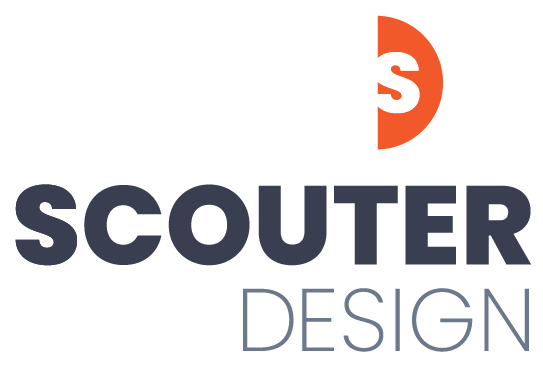
A brand book documents all the visual assets unique to your company's brand. It can also be expanded upon to include your company's mission, vision, and values. The goal is to provide a foundation of information for employees and designers that will help them promote your business in a cohesive and unified way. It's the roadmap that will guide them when interacting with customers and when designing marketing materials. This consistency strengthens your brand over time and as more customers engage with your product or your service. A brand book can be as simple or detailed as you'd like.
Visual attributes:
The visual attributes can include the logo, iconography, patterns, photography, color, and fonts.
-
The logo: The logo should be shown in color, black and white, and reversed out. If there are variations of the logo, show them here and explain when and where to use each variation.
-
Logo usage: Show how to use the logo properly. How much spacing should be around the logo? What file formats are best to use in certain situations? What shouldn't be done with the logo, such as changing the colors, creating your own version in Microsoft Word, adding drop shadows, etc.
-
Color: Include the color breakdowns of your corporate color palette in PMS, CMYK, and RGB. CMYK breakdowns are necessary for printing materials and RGB is necessary for on-screen products.
-
Fonts: The font used in the logo may not be the same as the corporate font(s). It's important to mention what those fonts are, if they are licensed fonts, and when/where to use them. For instance, a large company may only use the licensed fonts inside the marketing and design departments while an approved alternative set of Microsoft fonts can be used for the rest of the company. This helps keep licensing costs down and eliminates the possibility that any shared documents will come up with a missing font error message.
-
Photography: What types of imagery should be used when we promote ourselves? Some brands rely heavily on photography and the type of imagery used can evoke a certain feeling or mood to help capture the character of the brand. Whether it's the color or tone, subject matter, composition, or all of these, this is the place to document those characteristics.
-
Other visuals: This can include icons, patterns, and other design examples such as ads, covers, resumes, proposal templates, etc.
Business attributes:
The attributes that define a company's personality, mission, vision, and values can also be documented.
-
Background: Everyone loves a good story. Telling the story of how a business came to be can be memorable and inspirational for customers and employees. While it isn't necessary, it can help shape how someone feels about you.
-
Mission/Vision/Value: We have something of value to provide our customers and that is the core reason why we exist in the first place. So we can answer the questions: who are we, what do we do, why do we do it, and why is it better than our competitors? This is where we document our why.
-
Audience: Knowing your main audience helps you tailor your messaging. Who are they, what do they like/dislike, and where/how do we engage them? Is there a secondary audience?
-
Messaging: Messaging is involved at every touchpoint, from attracting the customer initially right down to the final deliverable. It includes external marketing collateral like ads, social media posts, meeting a potential customer, or when they show up at our door for the first or 100th time. What do we say? How do we say it?
-
Voice/Tone: How will we speak to clients/customers? Is it casual or formal? Communicating proper voice/tone along with messaging to our team creates consistency throughout the company. What we do and say at every customer encounter and at every touchpoint should be common knowledge internally.
"Your brand's tone of voice is the way in which you want to have a conversation with your customers."
~STEFAN MUMAW (BRAND STRATEGY FOR DESIGNERS, A LINKEDIN LEARNING COURSE)
Looking Beyond the Brand Book
If we take a broader look beyond the brand book, we would ask ourselves: How will we promote ourselves and what platforms will we use? How will we communicate to our audience? There are so many other assets a business will tap into to build and promote their brand. These assets can include corporate profiles, annual reports, stationery, report and proposal templates, signage, packaging, and social media posts. All these pieces need to hang together to form a complete identity system.
A strong brand system uses a consistent and custom approach to help customers find and interact with us. How we design each touchpoint shapes their experience and determines if they will come back to do business with us again. The brand book will outline the visual, the verbal, and the written so that your team will have the same set of instructions and tools needed to keep your brand relevant and unified.
© Scouter Design
Follow me on Facebook: @ScouterDesign | LinkedIn: ScouterDesign

